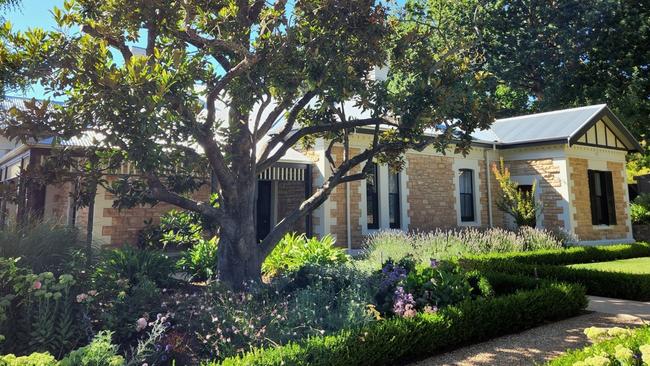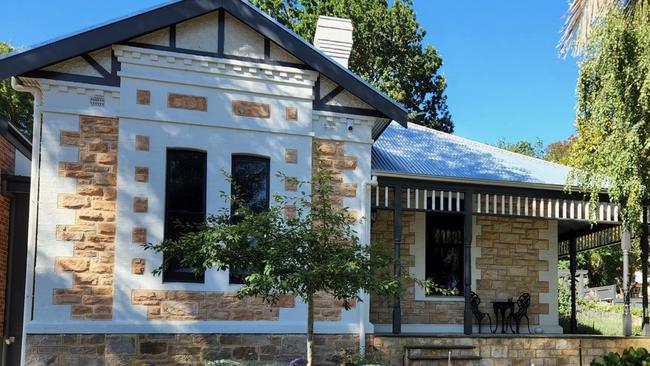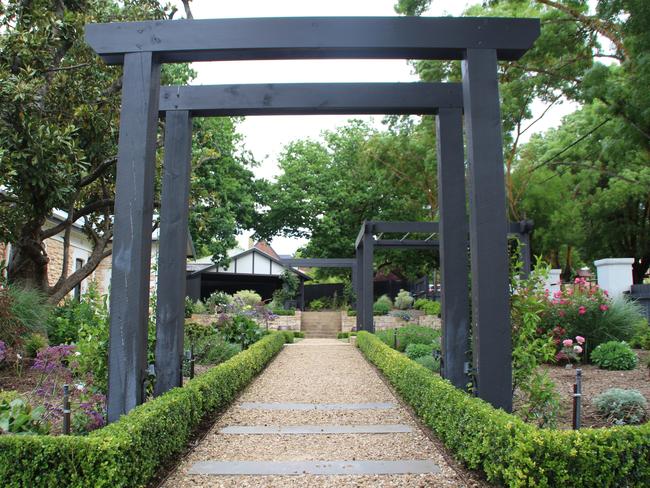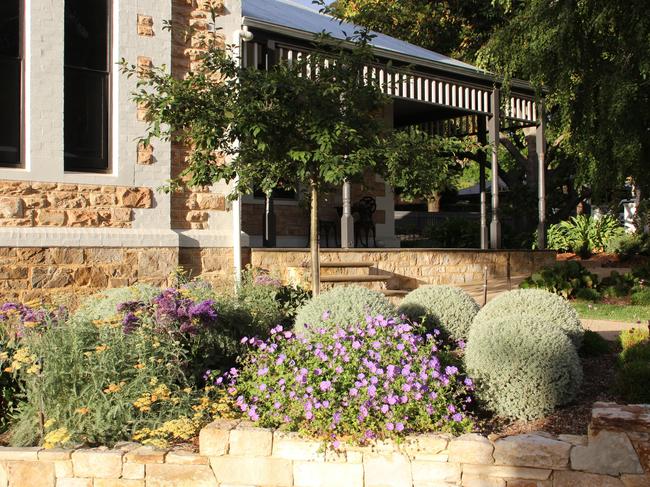A contemporary garden at the restored Auricht House
From overgrown to contemporary, this garden includes semi-formal low box hedges, cottagey perennials and a native flower-picking garden.

Auricht House, in the historic village of Hahndorf in the Adelaide Hills, was derelict when Val and Stuart Adlington bought it six years ago. The 1906 stone house, built by the town’s doctor, took four years to restore, meticulously preserving its historic details while adding a bold contemporary extension.
The property was so overgrown that “you couldn’t see the house from the road”, says landscaper Jamie McIlwain, who was brought in at the beginning of the project. Significant trees such as a huge English oak, evergreen Magnolia grandiflora and a majestic cedar were carefully preserved, while moving hundreds of tonnes of soil to re-grade the sloping, hotchpotch site. “Stuart wanted the garden to be largely accessible for grandchildren’s bikes and potentially for wheelchairs,” McIlwain explains.

McIlwain made fine use of the honey-coloured sandstone from a demolished house wall to craft a series of superb retaining walls, creating level, usable spaces and solving drainage issues at the same time. He also restored the raised circular fishpond, which sits under a pretty silver birch tree.
To add height and structure to the garden, McIlwain designed several substantial pergolas. “They frame views, clearly show the way to the front door, and allow the existing trees to have the focus they deserve,” he explains. Softening the oversized timbers are climbers such as the fragrant ‘Nahema’ rose, Chinese star jasmine and a double-flowering Japanese wisteria.

The style could be called “contemporary cottage”, flowing from the semi-formal front garden with its low hedges of box (Buxus ‘Faulkner’) and clipped balls of Westringia ‘Smokey’, becoming more informal towards the back. Cottagey perennials include salvias, sedums, perennial statice (Limonium), euphorbias, Geranium ‘Rozanne’, and ornamental grasses such as Miscanthus ‘Sarabande’. A row of five crimson crabapples (Malus ‘Royal Raindrops’) will be trained into a pleached hedge over time, adding privacy from the street, while in the back an espaliered hedge of citrus leads from the vegetable garden to the chook shed. There’s also a native flower-picking garden.
The generous proportions of the central lawn and wide paths and steps match those of the house and the 3000 sqm block, with plenty of room to showcase some of Stuart’s agricultural treasures – a horse-drawn cart, old ploughs and cartwheels.

As well as running his award-winning business, Hills Classic Gardens, McIlwain is on the committee for Open Gardens SA and a member of Master Landscapers SA. He conceived the idea of bringing the two organisations together for the biennial SA Landscape Festival to showcase the work of local designers and constructors.
Over the weekend of April 15-16, 10 professionally designed private gardens in Adelaide and the Hills – including Auricht House – will be open to the public. Tickets are $50 for an all-garden, two-day pass or $10 per garden on their website. Profits go to Country Women’s Association SA.
Q&A
If rain is a natural fertiliser dissolving nitrogen from the air to deliver to plants, wouldn’t tank water have this effect compared to town water?
Jo Nitschinsk, Nerang, Qld
It’s the electrical activity in thunderstorms that combines atmospheric nitrogen and oxygen to form nitrates, which then dissolve into the rain. Rain alone doesn’t contain appreciable levels of nitrogen. Processed drinking water intentionally has minimal nitrates; it can also be more alkaline, which can make nutrients less available to plants.
The cherry guava I planted in an east-facing bed to shade hydrangeas and hellebores has thirsty, invasive roots, so those plants are struggling. Is there a better small tree?
Wilson Oh, Adelaide
Hellebores have vigorous root systems and cope well under trees. Check the plants are getting sufficient light, as morning sun is not strong. If you think they still need shading, try a deciduous tree instead, such as one of the small Japanese maples (eg ‘Seiryu’ or ‘Bloodgood’) or a dwarf deciduous magnolia such as ‘Genie’ or ‘Cameo’.
MyHydrangea paniculata has great foliage but has hardly flowered in recent years. I prune back each year.
Deb Christiansen, Melbourne
These hydrangeas need more sun than common mophead types – at least a few hours of direct sun daily – so increasing shade could be a factor. As they bloom on new wood, you can prune almost any time except summer to shape them, dead-head them and remove weak stems. Hard pruning produces fewer, larger flowers; light pruning gives more, smaller flowers.


To join the conversation, please log in. Don't have an account? Register
Join the conversation, you are commenting as Logout